The Huawei Ascend Mate 7 Review
by Andrei Frumusanu on December 2, 2014 8:00 AM EST- Posted in
- Smartphones
- Huawei
- Mobile
- Ascend Mate 7
- HiSilicon
Camera Performance
The Mate 7 sports the same camera setup as the Honor 6. I've already determined for that device that the quality suffers quite a bit due to what seems to be very poor ISP performance.
For all practical purposes, I don't see any improvement in quality in the Mate 7. The device is still very lack-luster in the camera department.
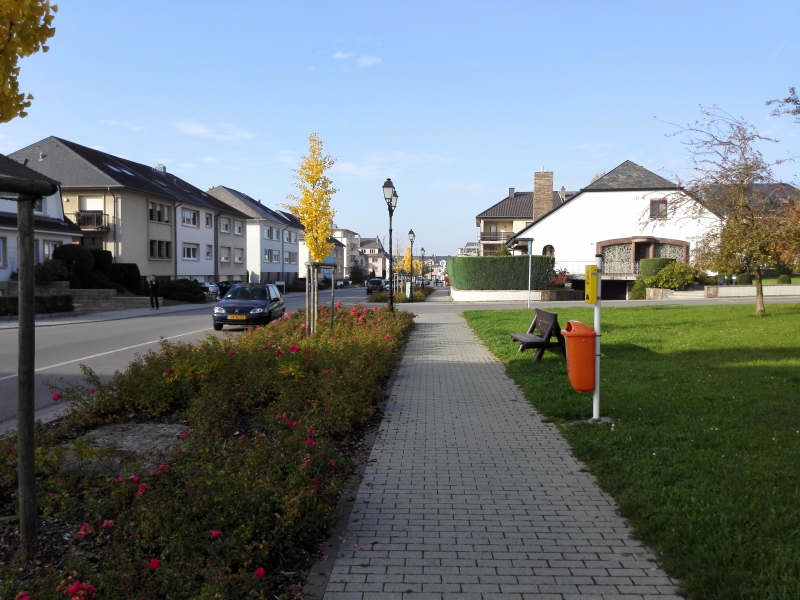
f/2 1/658s ISO50
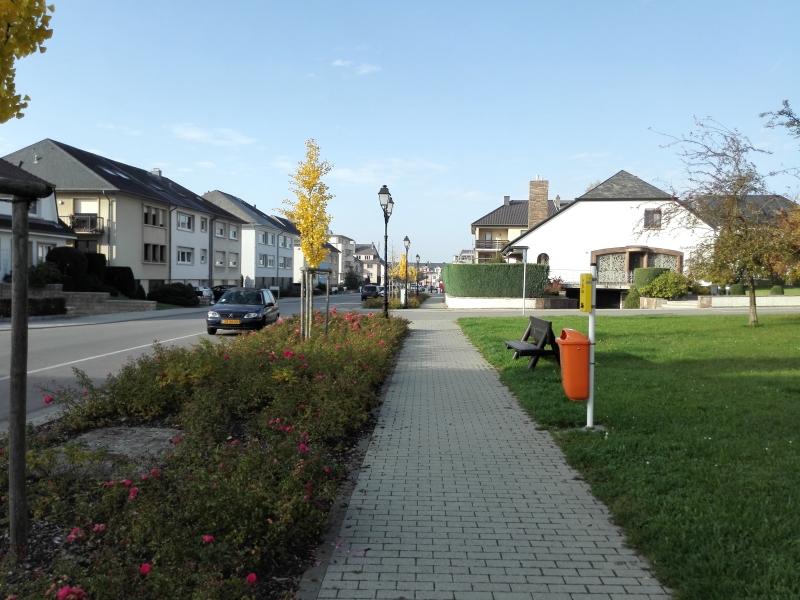
f/2 1/658s ISO50 HDR
During day-light shots we see the same lack of detail as found on the Honor 6. It's a pity that Huawei didn't manage to improve the processing here as the camera should have been able to produce better results based on the Sony IMX214 sensor. The HDR shots similarly see a colour balance issue as the image loses saturation.
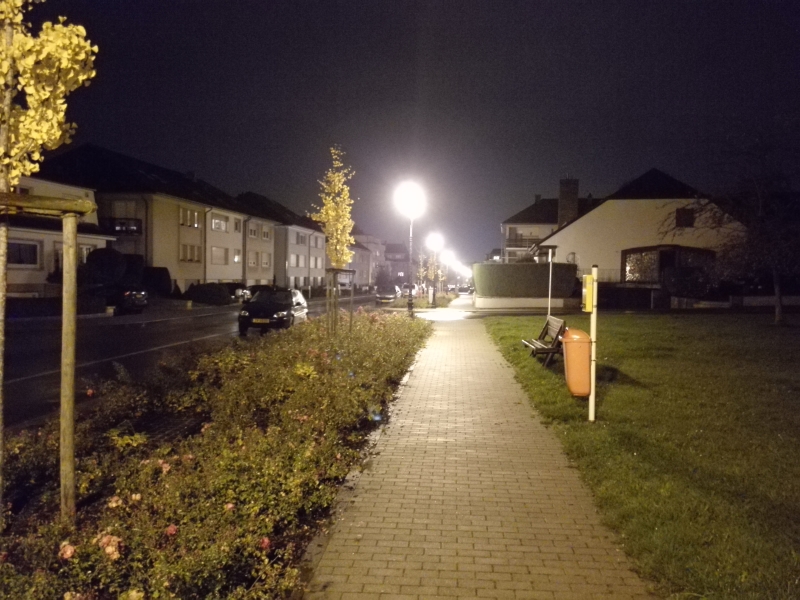
f/2 1/16s ISO3200

f/2 1/16s ISO800 HDR
In night-time shots again the Mate 7 underperforms. Under dark conditions where other flagship phones would at least capture the scene in some reasonable manner, the Mate 7, like the Honor 6 will be hard to recognize what it is you took a shot of.
The camera application provides a fresh new UI that looks fantastic. But the problem here is that I find the usability has taken a toll, as previously easily available settings are now hidden behind various sub-menus.
In the end the still-picture performance of the Mate 7 is rather lackluster and competitor devices such as the Note 4 are on a completely other level in terms of picture quality. Huawei has a lot of progress to do if they wish to compete in the camera department.
In the standard 1080p mode we get a 24Mbps AVC Baseline@L4.0 video stream at 25fps with 96Kbps stereo AAC audio. The video is sharp and fluid, albeit the colours are a tad oversaturated. It's the lack of any kind of stabilization is very obvious and the video is very shaky. Again the device offers excellent video audio quality capture which is I think one of the best out there.
When turning on the electronic image stabilization the quality of the video dramatically decreases. We see a big reduction in the details of the video and what should be 1080p turns into something inferior to 720p. It's pretty obvious what's going on here: Instead of increasing the capture frame beyond 1080p on the image sensor, Huawei is retaining the 1080p capture frame and then reduces the actual video window inside of the frame and reserves the margins needed for the EIS to operate. The video window is then upscaled again to 1080p, resulting in a blurry image and loss of detail. The effect also reduces the field-of-view of the camera.
The 720p video with both HDR and EIS is even worse off. We go down to a 14.4Mbps AVC video stream on a custom encoding profile, while retaining the audio track quality. Here the resulting image resembles more what a 480p recording would produce. I've determined that this is solely due to a badly performing ISP on the Kirin SoCs.
NAND Performance
The Mate 7 employs the same Toshiba eMMC solution as found on the Honor 6. There's not much to say here other than the performance being outright horrible and unacceptable for a 2014 product. Although the model number of the chip is the same as on the Honor 6, it still manages to underperform what was already a device which was bottoming out our benchmark suite.
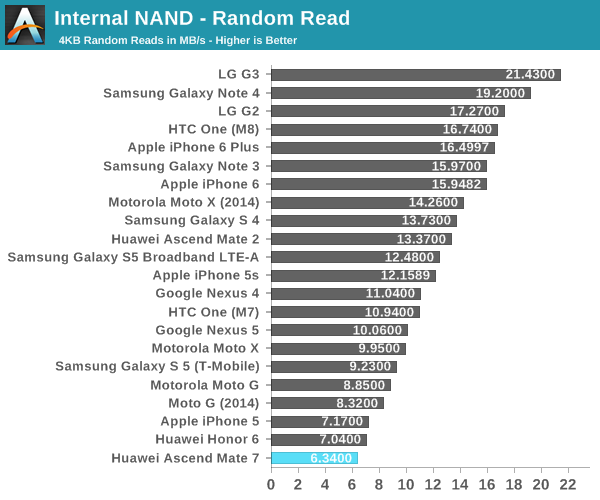
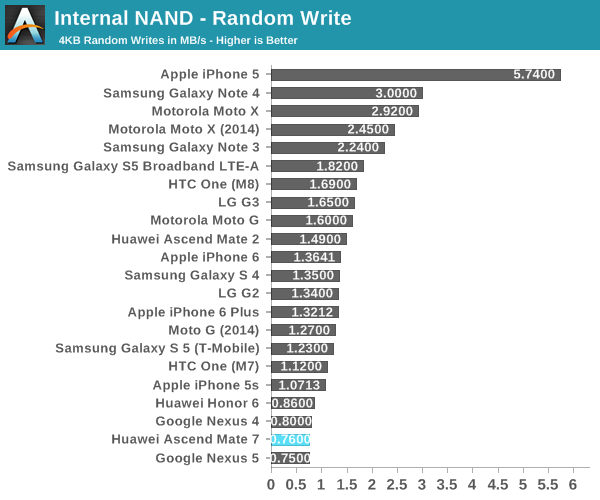
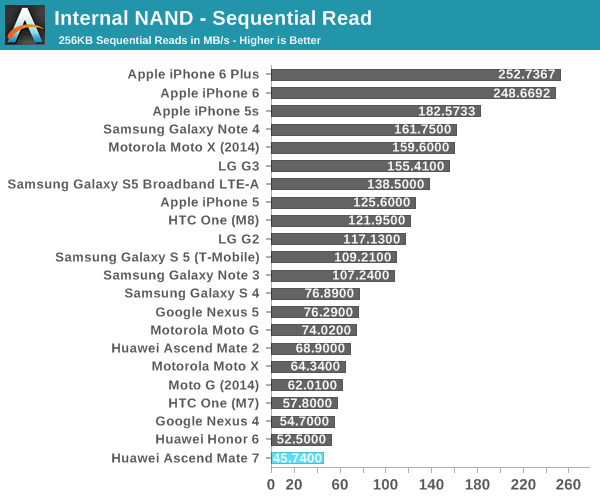
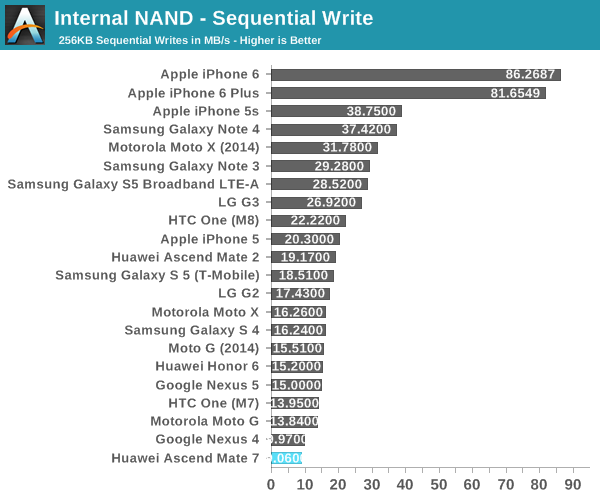
Competing flagships such as the Note 4 manage to outperform the Mate 7 by a hefty factor of 4 or 5 throughout all the tests. Surprisingly I don't seem to see the effect of this too much in everyday usage, but this might just be my subjective bias.
















72 Comments
View All Comments
Laststop311 - Tuesday, December 2, 2014 - link
Wish we could have some american phones with battery life like this.arsjum - Tuesday, December 2, 2014 - link
Andrei,Any chance you'll be reviewing Galaxy Note 4 exynos version?
Andrei Frumusanu - Tuesday, December 2, 2014 - link
I've been working on the article for 2 weeks, it's coming.DanD85 - Tuesday, December 2, 2014 - link
Thanks for reviewing this Huawei phone, anandtech. These days, Chinese manufacturers have much more interesting devices compare to the old players. Anandtech has been my favorite tech review site for more than 10 years and you guy offer the most in depth review on the whole interweb. Keep up the great work!Sicariase - Wednesday, December 3, 2014 - link
Seriously Andrei, thanks for this review. I've been tossing up between the note 4 and this for a couple of weeks, and just decided to get the huawei (didn't think the differences were massive from other reviews) when this review came out. You've potentially saved me from a world of disappointment.Bondurant - Wednesday, December 3, 2014 - link
As with other reviews on this site, the problem in this review is that there is no corresponding reference to real life usage. Just lots of numbers but for example why not a real life gaming comparison between Mate 7 and Note 4 ? NAND performs horrible in benchmarks but if in real life there is barely any noticeable change, than does the benchmark score even matter ? How about comparing the photos with other 13MP IMX214 phones ? Also frustrating i found is there is no explanation as to what exactly is the cause of poor battery performance of Mate 7, is it the fault of GPU or their modem or that it does not use a amoled screen like Note 4 ? Is it a fixable issue with rom updates ?Ofcourse ideally Huawei could have simply thrown in some Qualcomm and so on like Samsung does, but it prevents the development of Hauwei's own innovations and implementations. HiSilicon from its last year K3V2 to this years Kirin 925, there is huge improvement and they are already releasing their 64bit chip kirin 930 this December and a Kirin 950 in June.
Andrei Frumusanu - Wednesday, December 3, 2014 - link
Basically the cause of bad battery life is that power consumption of the Kirin SoC is too high - I've explained this in the review of the Honor 6 where I took an in-depth look into the chip.Bondurant - Wednesday, December 3, 2014 - link
But a comparison between Honor 6 and Samsung S5 (both the Qualcomm and Exynos version) battery life don't show Kirin SOC having such suspected high battery drain problem, although yes you did mention ways battery life could have been improved but nothing to say of a huge problem.The case with Mate 7 on the other hand with 1000mAh more battery than Honor 6 does seem weird that the battery life improvements are only marginal.
Andrei Frumusanu - Monday, December 8, 2014 - link
I did point out that the Honor 6 is less efficient than competing devices.johnny_boy - Thursday, December 4, 2014 - link
Are you serious? I own an Honor 6 and I'm getting two days of battery life under normal usage (YouTube, Gmail, Gcal, pdf reading, etc.) Under light usage I can get 2.5-3 days. This is with wifi on and auto half brightness, which I find comfortable. I'm even using Firefox for Android with adblock for browsing which is likely worse on the battery than Chrome. Some REALISTIC battery life numbers would be pretty useful--like how long were you getting under what you deem light/normal/heavy usage?